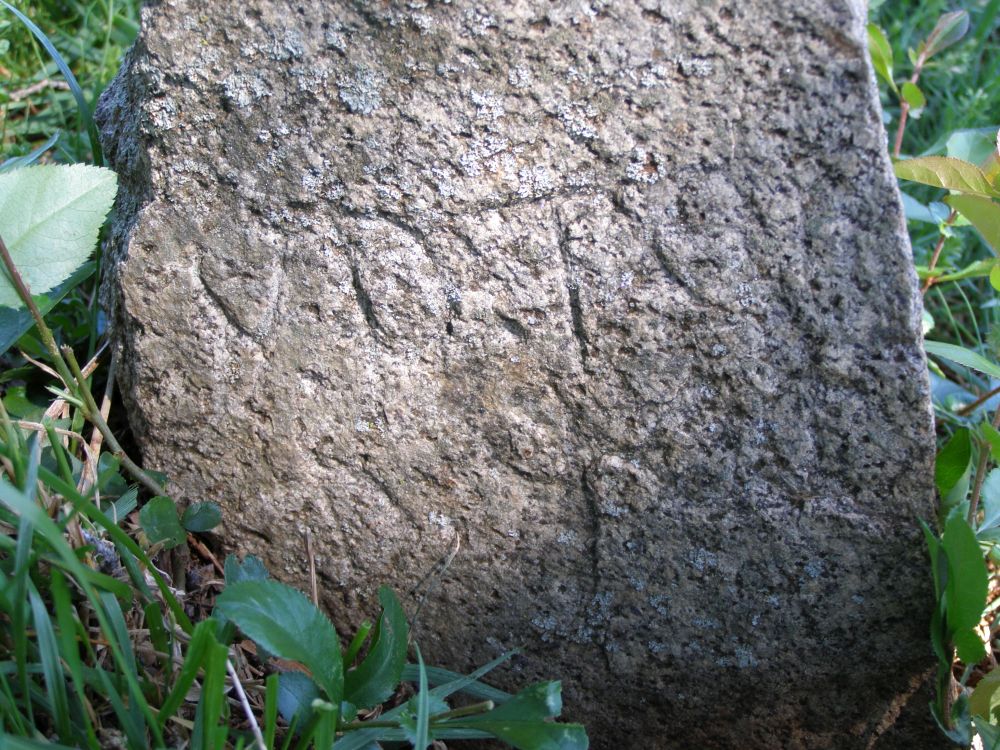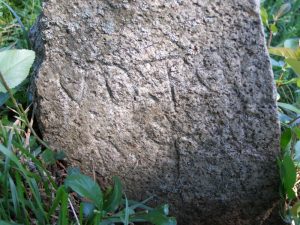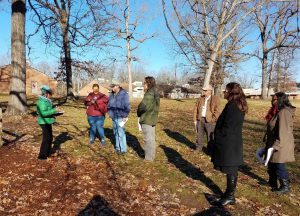Expanding DHR’s Record of Virginia Cemeteries


Like many organizations, DHR is challenged with managing and correcting a record of the past that is incomplete and does not yet fit the needs or reflect the complexities of all of our constituent communities. Our staff is making efforts to correct that record however, and some of those results can be seen in the agency’s cemetery records.
The Virginia Cultural Resource Information System (V-CRIS) is the online database that holds information on Virginia’s historic resources, both archaeological and architectural (and allows limited public access). V-CRIS contains data for cemeteries or burial grounds but distinguishes between those containing aboveground features such as gravestones or markers with inscribed text versus those lacking such written information. Burial grounds with inscribed markers are recorded in V-CRIS as architectural historical sites; those lacking inscribed markers or illegible gravestones are designated as archaeological sites. This latter category also includes areas with fieldstone markers, which typically have no written information, and sites that have no markers but reveal evidence of unmarked graves, and archaeological sites containing burials. The data for the two ways of recording cemeteries in V-CRIS, archaeological or architectural history, contain slightly different data.
A recent query of V-CRIS for the number of sites categorized as “funerary” yielded 9,059 records associated with the burial of human remains whether in a formal cemetery, an unmarked burial ground, or individual burials at sites with multiple functions and contexts. Of these total records, 2,476 are recorded as archaeological sites, 6,583 as architectural history records.
Of the 2,476 sites in the archaeological data, 596 have been identified as Euro-American, 217 as Native American, and 211 as African American. The remainder either contain individuals from multiple cultures or unidentified burials. A significant problem in the data is that 41% of the records (n=1,016) have no cultural affiliation indicated. It may be that there is no evidence that indicates cultural affiliation but, all too often, cultural affiliation is not identified because these are older records, and that data was simply not entered onto the forms. Additional research may be able to help us fill in that missing information and we welcome assistance from those who would like to help with that effort.
Ethnicity of Archaeological Funerary Sites in V-CRIS
| Indeterminate | 1016 |
| Euro-American | 596 |
| Native American | 217 |
| African American | 211 |
| Indeterminate, Native American | 85 |
| Euro-American, Native American | 68 |
| African American, Euro-American | 43 |
| Euro-American, Indeterminate | 42 |
| Other | 21 |
| Euro-American, Indeterminate, Native American | 14 |
| African American, Euro-American, Indeterminate | 12 |
| African American, Native American | 10 |
| African American, Euro-American, Native American | 8 |
| African American, Indeterminate | 7 |
| African American, Euro-American, Other | 2 |
| African American, Indeterminate, Native American | 2 |
| Indeterminate, Other | 2 |
| African American, Euro-American, Indeterminate, Native American | 1 |
| African American, Euro-American, Indeterminate, Native American, Other | 1 |
| African American, Other | 1 |
| Euro-American, Indeterminate, Other | 1 |
| Euro-American, Other | 1 |
Updating V-CRIS Records
The good news is that there have been recent efforts to correct these gaps in our data. Of the 298 archaeological funerary sites that have an African American presence, 187 have been recorded in the past 10 years; 109 of these have been recorded in the past three years alone; and 61 were recorded by DHR staff. DHR staff spends a great deal of time meeting with individuals, families, and community representative to record cemeteries, ensuring they are recognized in the historical record.

One catalyst pushing this increase in DHR recording more information about Black funerary sites during the past three years is the African American Cemetery & Graves Fund, which provides grants for the care and maintenance of historical (established prior to January 1, 1900) African American cemeteries and graves. This grant program, funded by the Commonwealth, is managed and implemented at DHR by David Edwards. He will now receive assistance from Joanna Wilson Green, a longtime DHR archaeologist who DHR recently hired to fill the newly created full-time position of Cemetery Preservationist.
Another driver of the recent increase in this data is not tied to funding but to broader social issues and a recognition that not everyone is represented equally in the historic record. There are large groups and communities who have been marginalized or excluded from records of the past. Recent recording efforts and this grant program are just small parts of a larger effort to expand representation in all of the work that we do at DHR.
If you would like to learn more about this and other grant programs at DHR, visit this DHR webpage. For the African American Cemetery & Graves Fund, you can reach David Edwards at 540 868-7030 or by email. We also welcome assistance in recording more cemeteries and updating data in existing records.
–Elizabeth Moore
State Archaeologist, DHR










